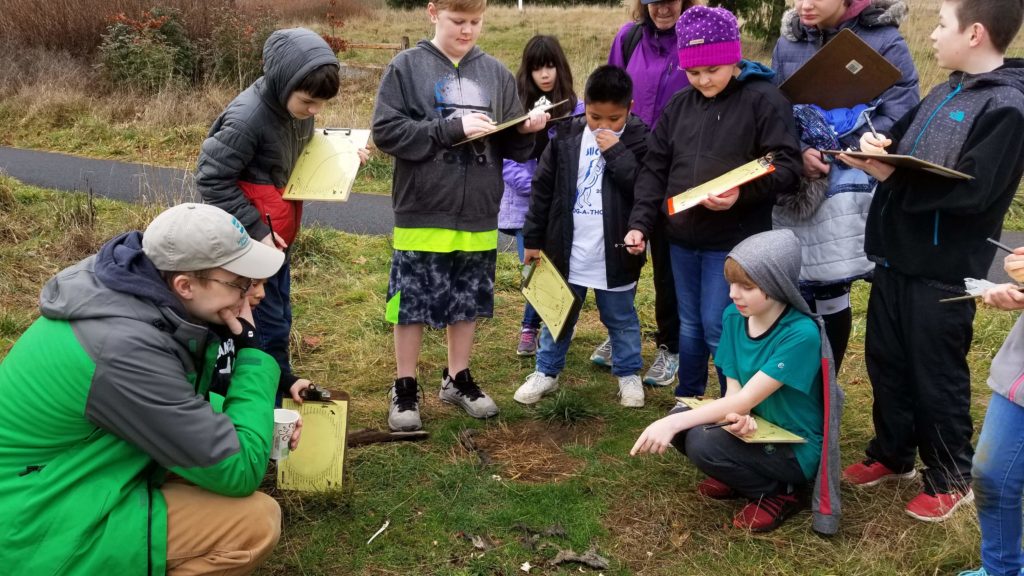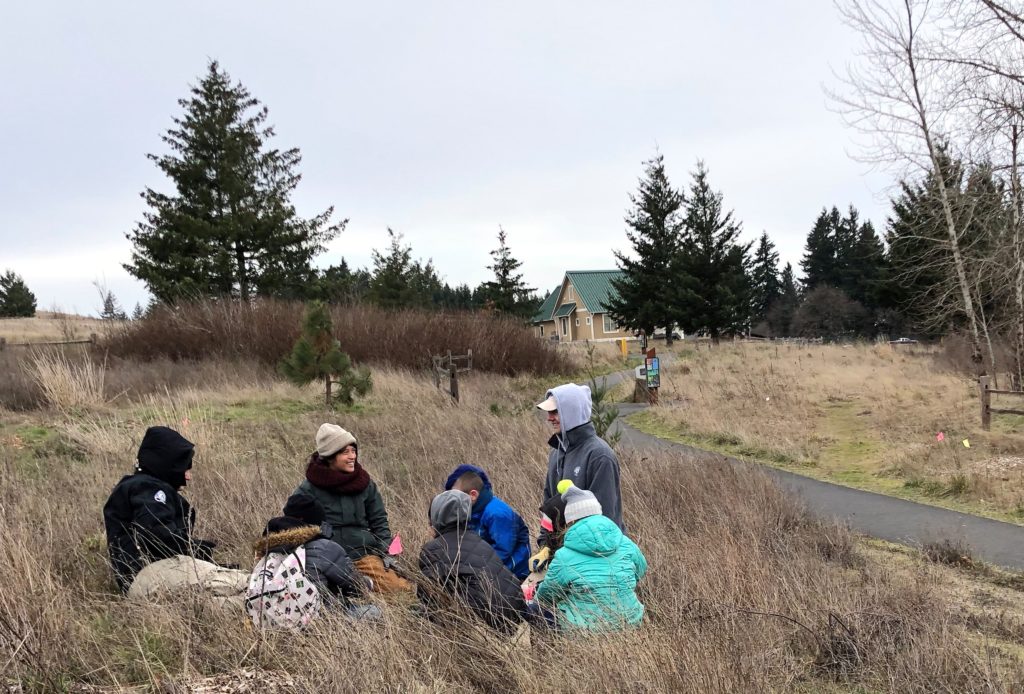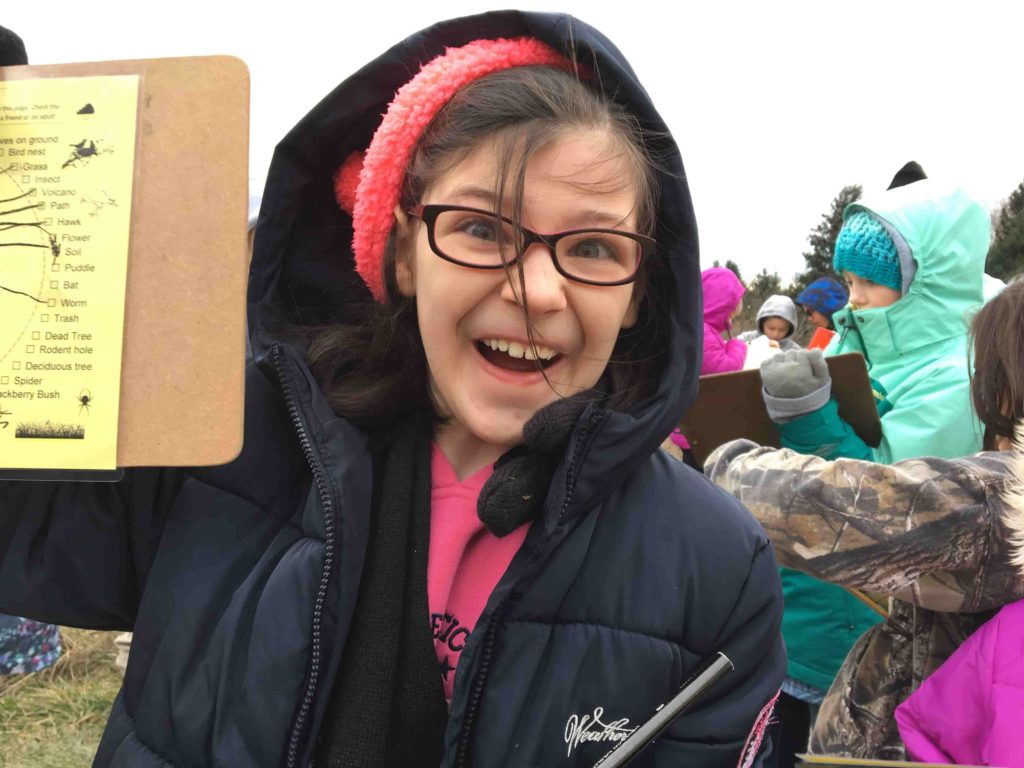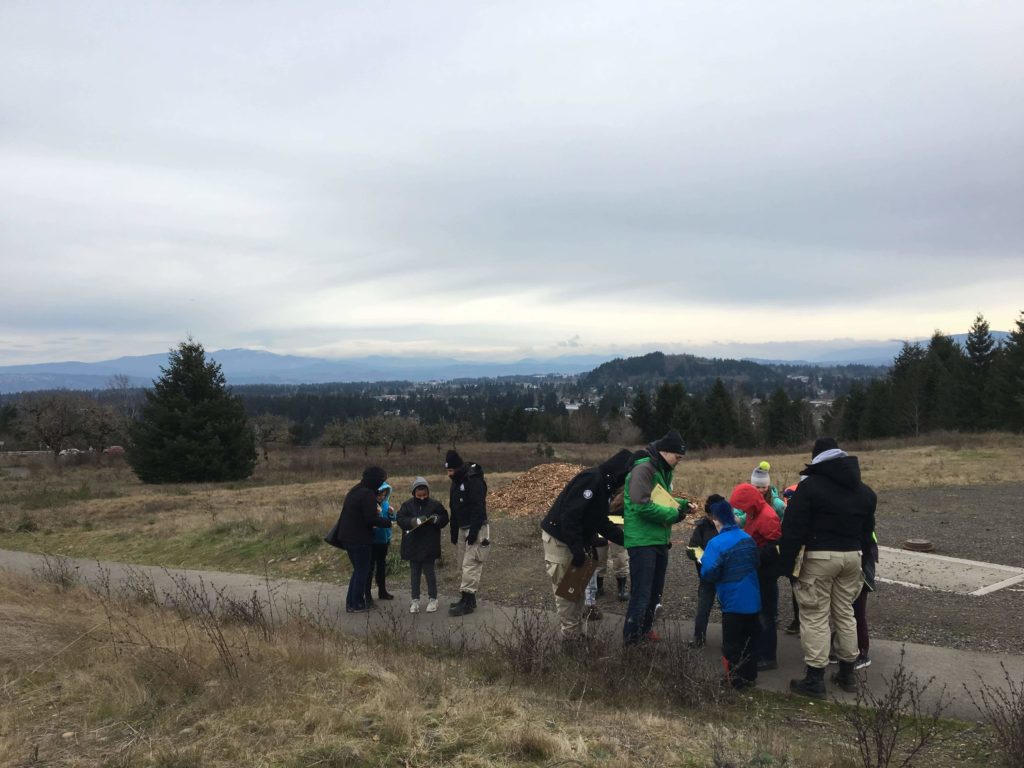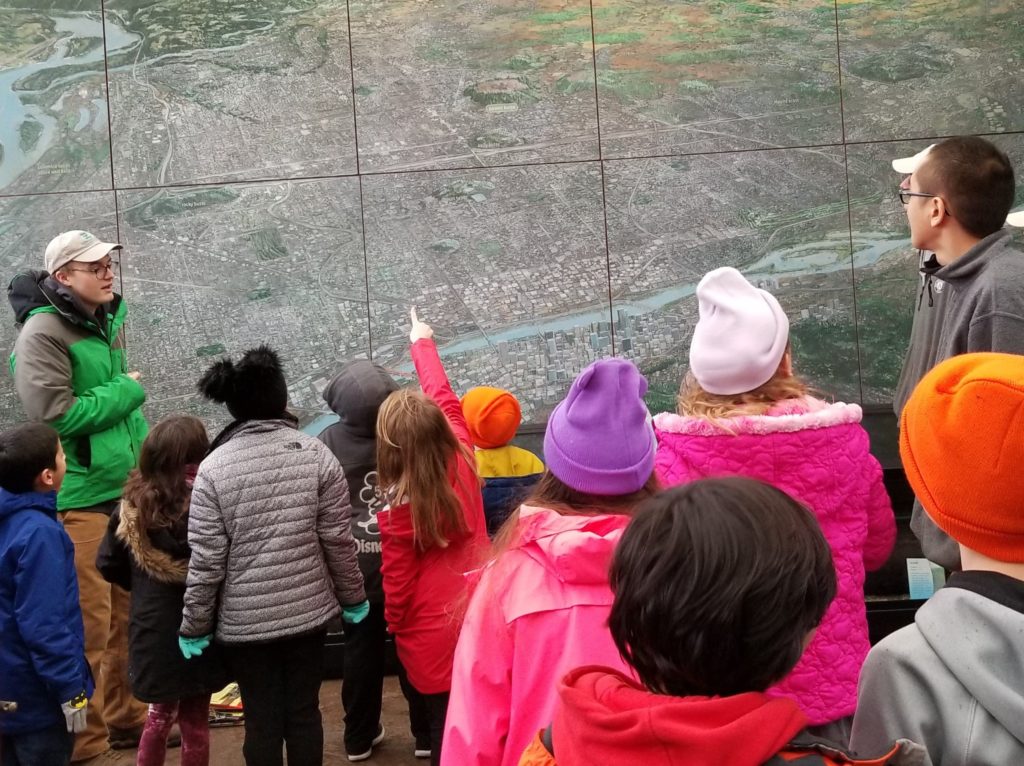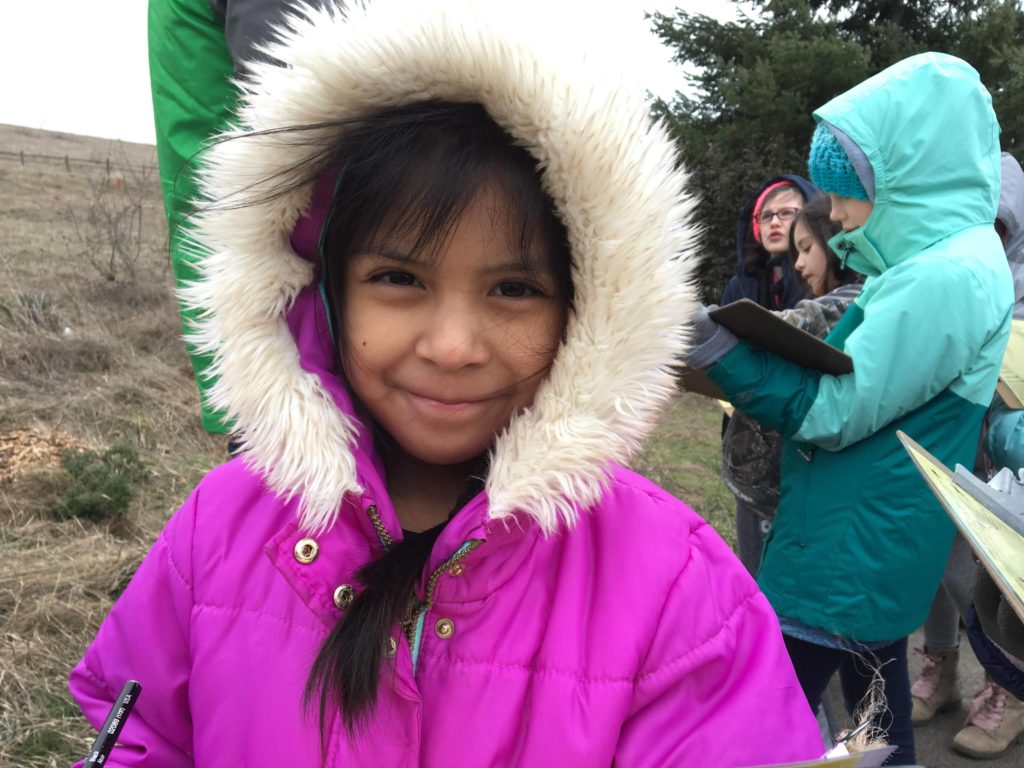Throughout January, nearly 200 students traveled to Powell Butte Natural Area to steward and learn about the beautiful park. Johnson Creek Watershed Council partnered with Friends of Trees and Portland Parks & Recreation’s Stewardship Program for the second year in a row to facilitate service learning trips for 8 classes! Clackamas County Water Environment Services (WES) is a key funder for this important work, and WES also covered bus transportation costs, which can be a major barrier when bringing students on field trips. For two of our days, we were joined by our amazing AmeriCorps NCCC (National Civilian Community Corps) crew, who used their environmental education skills to guide the students!
Each morning, students from Bilquist Elementary arrived at Powell Butte, greeted by smiling faces, views of Mt. Hood, and chilly wind. Once they all got hand warmers and extra layers, we split into groups for wildflower planting and an ecology scavenger hunt. Before digging, students discussed why we were planting wildflowers around the park entrance near the visitors center. Students came up with some great reasons: to help pollinators and birds, to prevent erosion, to beautify the entrance for visitors, and to improve biodiversity! The 4th and 5th-grade classes had planted with JCWC last year at Errol Heights, but for some 3rd-grade students, this was their first time ever planting anything! Together, we planted almost 500 native wildflowers, including Sidalcea, Gumweed, Douglas Aster, Red Columbine, and Oregon Iris. The students were proud of their hard work, and are excited to bring their families back in the spring to see their flowers bloom!
The other part of each trip was an ecology scavenger hunt (created by Confluence AmeriCorps member Jack Halsey). First, students studied a big map in the visitors center and found their school, Johnson Creek, and Powell Butte. Then, we talked about what a watershed is, where stormwater goes when it rains, and the life cycle of salmon. Next, we ventured outside with our scavenger hunt. As we hiked along Powell Butte’s trails, we used all our senses (except taste!) to search out curiosities in nature. We saw some cool things, like volcanoes, insects, soil, and rodent holes. Students learn about new concepts, like how to tell deciduous and coniferous trees apart, the ecological role of snowberries, and what the word “scat” meant. As we went along, we talked about how these different things might be connected-like soil, a tree, a birds nest, and a bird! They loved the opportunity to explore nature, discover new things, and think about how small parts of nature connect to form a complex ecosystem.
So what was our best find on the scavenger hunt, you might ask? We found a pile of bones! Using their detective skills, students hypothesized what kind of animal they were looking at. There were teeth and fur, so it probably wasn’t a bird. We found vertebrae, so the animal must have had a backbone! We thought the bones were too big to be from a squirrel but too small to be from a deer. Each class decided we were likely looking at the remains of a raccoon, a skunk, or a possum, and that it was probably eaten by a coyote. It was a joy to see the students use their inquiry skills and creativity to problem solve. Despite the cold weather, students from every class were full of energy as they got back on their bus, proud of their stewardship work, and excited to learn more about ecology and nature in the future.
Thank you to the teachers, parent chaperones, and AmeriCorps NCCC members for their help and for taking great photos!
![]()
![]()
![]()
![]()
![]()
![]()
![]()
![]()
![]()
![]()
![]()

